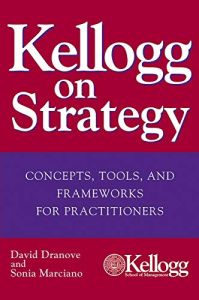Зарегистрируйтесь на getAbstract, чтобы получить доступ к этому краткому изложению.

Зарегистрируйтесь на getAbstract, чтобы получить доступ к этому краткому изложению.
David Dranove and Sonia Marciano
Kellogg on Strategy
Concepts, Tools, and Frameworks for Practitioners
Wiley, 2005
Что внутри?
There are hopes and dreams – and there is strategy. Get real with mathematically and economically valid planning tools.
Recommendation
This concise guide to strategy offers an excellent basic introduction to business strategy. David Dranove and Sonia Marciano not only outline their own benefits-minus-cost ("B - C") approach to strategy; they also usefully summarize the essentials of other widely accepted approaches, most notably that of Harvard Business School professor Michael E. Porter. They write lucidly, avoid academic jargon and stay focused on the essentials without burdening the reader with unnecessary detail. They illustrate their discussion with examples drawn from actual business successes and failures, and two case studies, one from the airline industry and the other from the health-care industry. getAbstract recommends this book to beginning managers looking for a strategy primer. Experienced strategists can turn to it for a refresher course in fundamental business truths.
Summary
About the Authors
David Dranove is a professor at the Kellogg Graduate School of Management. Sonia Marciano teaches at Harvard Business School.


















Comment on this summary